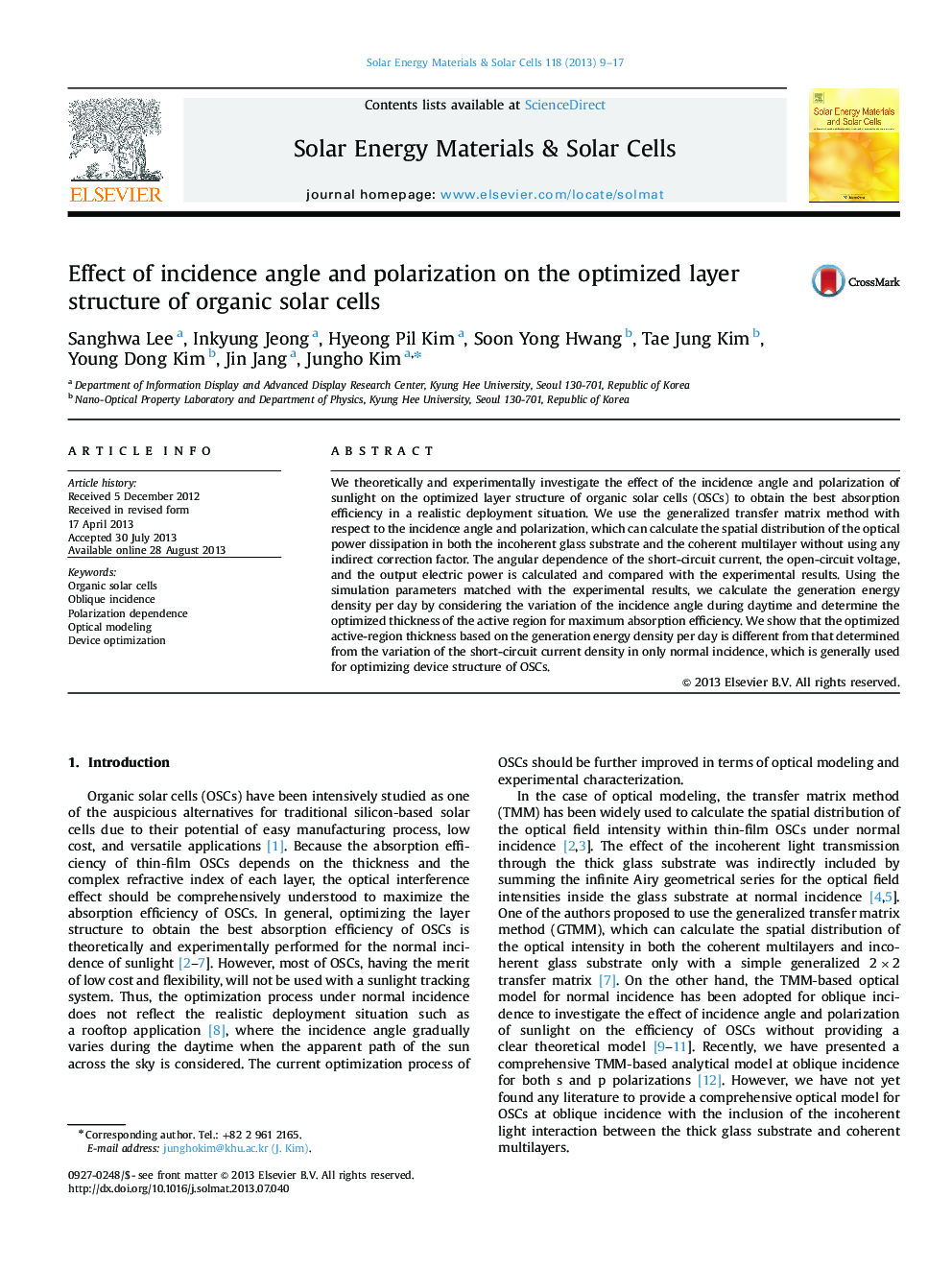| Article ID | Journal | Published Year | Pages | File Type |
|---|---|---|---|---|
| 78287 | Solar Energy Materials and Solar Cells | 2013 | 9 Pages |
•New and comprehensive optical modeling with the generalized transfer matrix method.•Simultaneous calculation of optical field distribution in the incoherent glass and coherent multilayer in oblique incidence.•Polarization-dependent angular responses measured and compared with the calculation.•More precise optimization of layer structure by considering incidence angle variation during daytime.
We theoretically and experimentally investigate the effect of the incidence angle and polarization of sunlight on the optimized layer structure of organic solar cells (OSCs) to obtain the best absorption efficiency in a realistic deployment situation. We use the generalized transfer matrix method with respect to the incidence angle and polarization, which can calculate the spatial distribution of the optical power dissipation in both the incoherent glass substrate and the coherent multilayer without using any indirect correction factor. The angular dependence of the short-circuit current, the open-circuit voltage, and the output electric power is calculated and compared with the experimental results. Using the simulation parameters matched with the experimental results, we calculate the generation energy density per day by considering the variation of the incidence angle during daytime and determine the optimized thickness of the active region for maximum absorption efficiency. We show that the optimized active-region thickness based on the generation energy density per day is different from that determined from the variation of the short-circuit current density in only normal incidence, which is generally used for optimizing device structure of OSCs.
Graphical abstractFigure optionsDownload full-size imageDownload as PowerPoint slide
